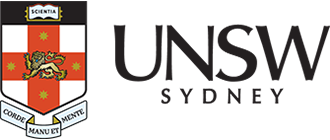Thermo ISQ GC-MS

Description
The Thermo ISQ GC-MS is a robust, single quadrupole mass spectrometer designed for high-throughput analysis. It offers exceptional sensitivity, reliability, and ease of use for applications in environmental, forensic, pharmaceutical, and food safety testing. With its efficient ion source and automated system, it ensures accurate and consistent results, enhancing laboratory productivity and performance. The Thermo ISQ GC-MS with pyrolysis feature at the BMSF in F10 (June Griffith Building) offers robust performance for analysing complex samples. It includes a Direct-Exposure Probe (DEP) capable of flash vaporization or pyrolysis up to 1600°C, and a Direct-Insertion Probe (DIP) for slower volatilization of powders and solids up to 450°C. This system is ideal for applications requiring detailed thermal decomposition analysis, providing high sensitivity and flexibility for various sample types.
Specifications
- Mass Range: 1.2–1100 u
- Acquisition Rate: < 240 scans per second in SIM mode.
- Ion Source: ExtractaBrite EI source with dual filaments, programmable to 350 °C.
- NeverVent™ Technology: Allows quick GC column changes without venting
- Ionisation Modes: a. Electron Ionization (EI) b. Advanced Electron Ionization (AEI) c. Chemical Ionization (CI)
- Mass Filter: Dual-stage mass filter with off-axis ion guide pre-filter.
- Detector: Thermo Scientific™ DynaMax XR detection system
Applications
- Environmental contaminants
- Chemical analysis
Instrument location
Bioanalytical Mass Spectrometry Facility
Room 401, Level 4
North West Wallace Wurth Building (C27)
UNSW Sydney,
NSW 2033
Phone: 02 9385 1717
Email: bmsf@unsw.edu.au
Room B50, Basement Floor
June Griffith Building (F10)
UNSW Sydney,
NSW 2033
Phone: 02 9385 1717
Email: bmsf@unsw.edu.au
Dr Anne Poljak
-
Phone
02 9385 1994 -
Email
a.poljak@unsw.edu.au
Dr Anjaneyaswamy Ravipati
-
Phone
02 9385 8720 -
Email
a.ravipati@unsw.edu.au
Parent facility
Explore more instruments, facilities & services
Our infrastructure and expertise are accessible to UNSW students and staff, external researchers, government, and industry.




